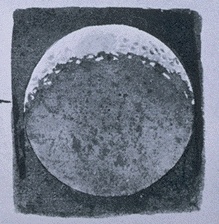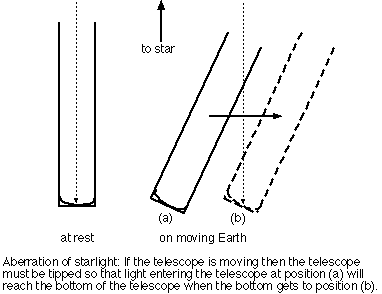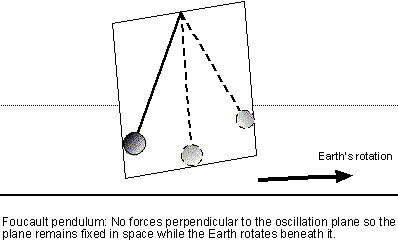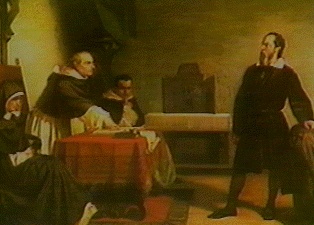Video lecture for this chapter
In the 16th century the hierarchical structure of the Church's authority was inextricably bound with the geocentric cosmology. ``Up'' meant ascension to greater perfection and greater control. God and heaven existed outside the celestial sphere. There was a gradation of existence and control from perfect existence to the central imperfect Earth. God delegated power to angels to control the planet movements and to guide the various earthly events. Plants and animals existed to serve humans and humans were to serve God through the ecclesiastical hierarchy of the Church.
Giordano Bruno (lived 1548--1600 C.E.) revived Democritus' (a contemporary of Socrates) view that the Sun was one of an infinite number of stars. This infinite sphere was consistent with the greatness of God. Bruno believed in a heliocentric universe. He believed that God gave each of us an inner source of power equal to all others, so there was no justification for domination and servitude. His model had definite political ramifications that threatened the Church's political authority.
Galileo Galilei (1564--1642 C.E.) was the first person we know of that used the telescope for astronomical observations (starting in 1609). The telescope was originally used as a naval tool to assess the strength of the opponent's fleet from a great distance. He found many new things when he looked through his telescope:


Galileo also made advances in understanding how ordinary objects move here on the Earth. He set up experiments to see how things move under different circumstances. He found that Aristotle's view of how things move was wrong. Galileo's observations contradicted the long-unchallenged physics of Aristotle, who taught that in order for something to keep moving at even a constant speed, a force must be continually applied. Aristotle also thought that something falling will fall at a constant speed and that heavier things will always fall more quickly than lighter things. Galileo discovered that an object's motion is changed only by having a force act on it. He also discovered that objects falling to the ground will accelerate as they fall and that all objects, regardless of size, would fall with the same acceleration in the absence of air drag.
Galileo's studies of how forces operate also provide the foundation to prove that Earth spins on its axis. Although the stars and Sun appear to rise and set every night or day, they are actually stationary. Evidence of the Earth's rotation (from west to east) is seen with the deflection of objects moving in north-south direction caused by the differences in the linear speed of the rotation at different latitudes. All parts of the Earth take 23 hours 56 minutes to turn once, but the higher latitudes are closer to the Earth's rotation axis, so they do not need to rotate as fast as regions nearer the equator. A moving object's west-east speed will stay at the original value it had at the start of its motion (unless some force changes it). If the object is also changing latitudes, then its west-east speed will be different than that for the part of the Earth it is over. Therefore, moving objects appear to be deflected to the right in the northern hemisphere and to the left in the southern hemisphere. This is called the coriolis effect after Gustave-Gaspard Coriolis (lived 1792--1843 C.E.) who deduced the effect in 1835 to explain why cannonballs shot long distances kept missing their target if the cannon was aimed directly at its target. See energy flow section for applications (and illustrations) of the coriolis effect to planet atmospheres.
Jean-Bernard-Léon Foucault (lived 1819--1868) gave the first laboratory demonstration of the Earth's spin in 1851. A large mass suspended from a long wire mounted so that its perpendicular plane of swing is not confined to a particular direction, will rotate in relation to the Earth's surface. The only forces acting on the ball are gravity and the wire tension and they lie in the plane of oscillation.

There are no forces acting on the ball perpendicular to the oscillation plane, so the oscillation direction in space does not change. However, it does rotate relative to the Earth's surface because the Earth is rotating under the swinging pendulum. The pendulum appears to rotate westward with a period that depends on the latitude: rotation period = (23h 56m)/sin(latitude), where ``sin'' is the trigonometric sine function. The coriolis effect and the Foucault pendulum are both based on Galileo's discovery that an object's motion (speed and/or direction) are changed only if there is a force acting on it.
Galileo is often considered the father of modern
science because his ideas were not derived from thought and reason alone.
He used the guidance of nature (experiments). This marked a revolutionary
change in science---observational experience became the key method for
discovering nature's rules. His arguments for the heliocentric model and the
critical role of objective observation of nature in science got him into
trouble with the Church.
 The struggle between Galileo and the Church was
not a battle between science and religion but was part of a larger battle over
different conceptions of the proper routes to knowledge, God, and world view.
The struggle between Galileo and the Church was
not a battle between science and religion but was part of a larger battle over
different conceptions of the proper routes to knowledge, God, and world view.
Galileo's intent was to improve the Church by giving a truer understanding of how God actually worked in the physical universe and by allowing greater access to God for more people. Galileo loved to debate and had the bad habit of ridiculing those he disagreed with. Some of those he ridiculed were powerful political figures in the Church. He wrote a book detailing the arguments for and against his model of the universe in a way that ridiculed the official view of the Church. It was written in Italian (the language of everyday discourse) rather than the scholarly Latin, so even non-scholars were exposed to his scathing arguments against the geocentric universe. He may have had more success in getting greater acceptance of his different views of God and research if his style was different but perhaps his ideas needed just such a champion at that time.
This section is titled "Battle with the Church" but that is perhaps a bit misleading when you take a careful look at what really happened between Galileo and church authorities. The disagreement between Galileo and some church figures is often cast as a battle between science (reason, the "good guy") and religion (faith, the "bad guy") in the popular media today but science historians know that the debate was not quite so clear cut—both sides were right on some points and wrong on others; reality is often messier than what is portrayed in the media. For example, Galileo's argument that his observations showed that the heliocentric model is correct and that the Earth cannot be the center of the universe was only partly correct. While some reactionary church officials thought Galileo was a heretic because of their narrow more literal interpretation of scripture, other church officials knew that Galileo's observation disproved Ptolemy's geocentric model but not something like Tycho's geocentric model. Those church officials knew the philosophical difference between disproving one model vs. proving another one correct. Other examples of the messy reality vs. the simplistic media view of the "Galileo affair" is found in Lawrence Principe's "Science and Religion" lectures (see the fifth and especially, the sixth lectures in the series).
![]() Go back to previous section --
Go back to previous section --
![]() Go to next section
Go to next section
last updated: January 21, 2022